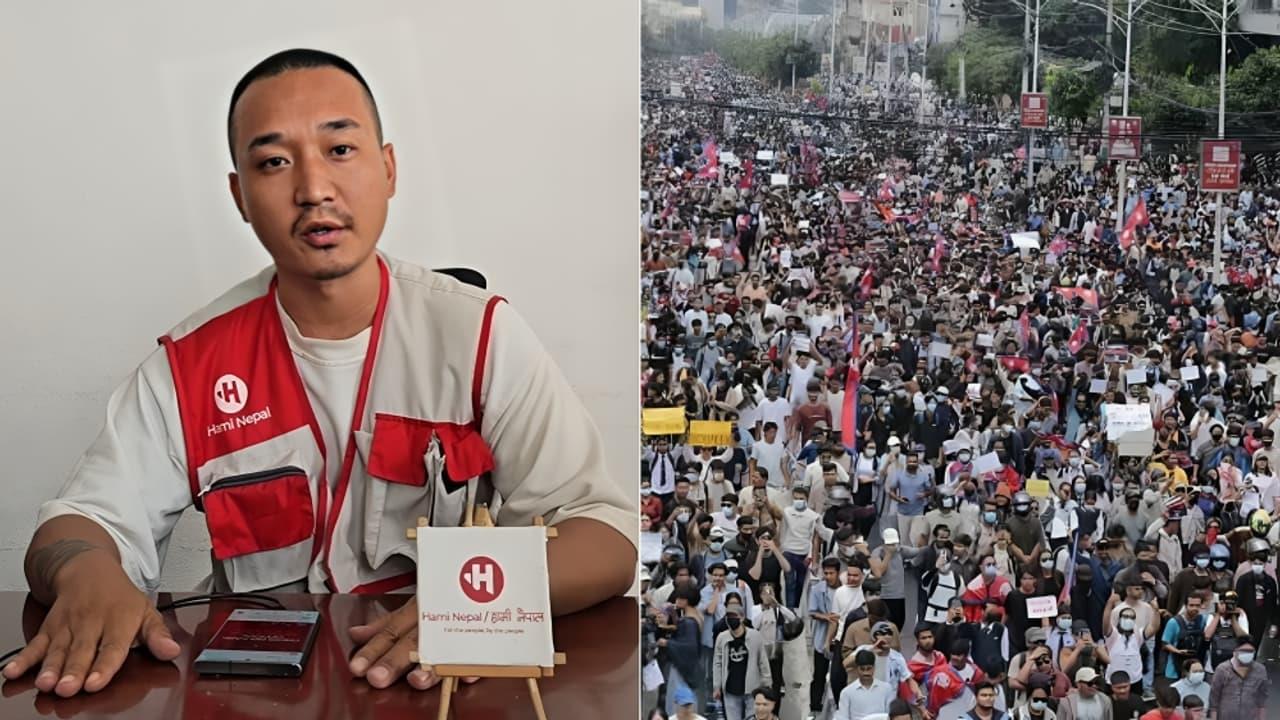Who Is Sudan Gurung? Why Nepal's Social Media Blackout Triggered Mass Protests The Role Of Hami Nepal
Nepal faced its deadliest youth uprising in years after the government banned 26 social media platforms, including Facebook, Instagram, WhatsApp, YouTube and X, on September 4. The move led to violent protests in Kathmandu, resulting in at least 20 deaths and more than 300 injuries as demonstrators clashed with security forces. The government's decision to block popular social media platforms was officially justified as a regulatory move. However, many Nepalis saw it as an attempt to silence dissent. Demonstrations began peacefully, organized by youth groups demanding the ban be lifted. As protests grew, clashes with police escalated into violence.
Prime Minister KP Sharma Oli defended the ban, blaming 'unwanted elements' for the unrest, though he insisted the intent was regulation, not censorship. After growing public pressure, the Cabinet reversed the decision the same day and Communication Minister Prithvi Subba Gurung announced that social media access would be restored.
The protests led to political consequences. Home Minister Ramesh Lekhak resigned, citing moral responsibility for the loss of lives during the clashes. Security tightened as the army took control of roads around Parliament to prevent further unrest. However, sources revealed that the situation remained volatile and may force Prime Minister Oli's resignation in coming days.
Sudan Gurung: The face of the protests
At the heart of the protests is 36-year-old Sudan Gurung, the president of Hami Nepal, a youth-led NGO. Gurung and his organization turned the demonstrations into a symbol of peaceful resistance. He called for students to carry books and wear uniforms to express peaceful defiance. Sudan's leadership reflects the frustrations of Nepal's youth, who increasingly distrust traditional political leaders.
View this post on Instagram
A post shared by Sudan Gurung (@sudangrg_haminepal)
View this post on InstagramA post shared by Sudan Gurung (@sudangrg_haminepal)
View this post on InstagramA post shared by Sudan Gurung (@sudangrg_haminepal)
Before the social media ban, Hami Nepal used platforms like Instagram to share protest routes and safety tips. Gurung became well-known as someone who channels digital-age frustration into organized action, focusing on civic and humanitarian issues. He previously led protests demanding transparency in healthcare and highlighted social concerns such as student harassment.
Hami Nepal's role and mission
Founded after the 2015 earthquake, Hami Nepal began as a relief organization and expanded into a civic movement. The NGO works in flood rescues, food distribution and water supply restoration. It also raises issues about students and migrant rights. Its members usually avoid politically sensitive posts but actively update the public about humanitarian projects.
View this post on InstagramA post shared by Sudan Gurung (@sudangrg_haminepal)
View this post on Instagram
A post shared by Sudan Gurung (@sudangrg_haminepal)
View this post on InstagramA post shared by Sudan Gurung (@sudangrg_haminepal)
Sudan Gurung's public message before the protest highlighted self-change as a path to national reform. His leadership during the movement was pivotal in mobilizing young people and channeling anger into peaceful activism. The movement's sudden turn towards protest reflects the deep unrest among Nepal's youth.
Digital resistance: VPN surge in Nepal
During the blackout, many Nepalis turned to Virtual Private Networks (VPNs) to bypass restrictions. Proton VPN reported a 6000% spike in new sign-ups from Nepal in just three days. This revealed how determined people were to stay connected and continue organizing despite government attempts to control information.
Aftermath: Schools closed indefinitely
Following the deaths, protest leaders announced an indefinite closure of all schools, colleges and universities. Their demand was clear: a full explanation and accountability for the killings. Students and activists expressed deep anger, with online groups like 'Youths Against Corruption' becoming platforms for outrage, calls for action and even extreme messages blaming security forces for firing bullets at protesters.
The situation remains uncertain in Nepal. With continued public pressure and growing distrust towards the government, many believe Prime Minister Oli's position is weakening. The protests reflect broader dissatisfaction in the country's youth, who demand greater freedom, transparency and respect for civil rights.
As of now, the government has rolled back the ban and is trying to manage the growing unrest, but the fear of more protests remains. International observers are watching closely as Nepal grapples with this unprecedented youth-led movement.
Legal Disclaimer:
MENAFN provides the
information “as is” without warranty of any kind. We do not accept
any responsibility or liability for the accuracy, content, images,
videos, licenses, completeness, legality, or reliability of the information
contained in this article. If you have any complaints or copyright
issues related to this article, kindly contact the provider above.
Most popular stories
Market Research

- United States Lubricants Market Growth Opportunities & Share Dynamics 20252033
- Daytrading Publishes New Study On The Dangers Of AI Tools Used By Traders
- Newcastle United Announce Multi-Year Partnership With Bydfi
- Ecosync & Carboncore Launch Full Stages Refi Infrastructure Linking Carbon Credits With Web3
- Utila Triples Valuation In Six Months As Stablecoin Infrastructure Demand Triggers $22M Extension Round
- From Zero To Crypto Hero In 25 Minutes: Changelly Introduces A Free Gamified Crash Course


















Comments
No comment